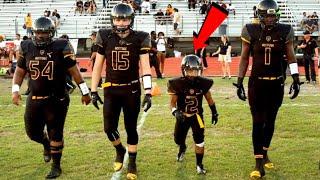The grand irony of the NCAA’s long-awaited decision to change its transfer rules is that the wrong argument ultimately swung the debate. Somewhere along the way, it started to register with more and more fans of college sports, administrators and the athletes themselves that it was unfair for coaches to be able to change jobs freely, while athletes who want to change schools have to sit out a year before becoming eligible to play again. You can draw a direct line from that narrative taking hold to Wednesday’s decision by the NCAA Div. 1 council to give college athletes one free pass to transfer during their careers and play right away at the next school. But to truly understand why the NCAA’s previous rule was unfair, discriminatory and needed to be done away with long ago, look no further than this fact: Most college athletes already had the freedom to transfer without penalty before Wednesday. It was only in five sports — football, men’s and women’s basketball, baseball and men’s hockey — that transfers were required to sit out a year. Why those sports? Because they’re the ones that generate revenue for schools. Nobody bothered to care what happened with the rest. In that sense, the NCAA’s decision — as clunky and drawn-out as it might have been — is a real victory for the rights of college athletes. It’s not complete freedom of movement, which is a right coaches, professors and regular students have, but it’s a much fairer and more sensible system than what has been in place for decades. The truth is, this should have been done long ago, but coaches and administrators are reluctant to do anything that takes control out of their hands. If your high six- or seven-figure job depended on the whims of 19, 20 and 21-year-olds, you too would probably be resistant to anything that fundamentally changed the field of play. Like on most issues, though, the NCAA slow-walked this one until pressure from the general public and even Congress became too great to ignore. Even after it was obvious for nearly a year that the NCAA was heading in this direction, there were last-minute issues raised about notification cut-off dates for an athlete declaring an intention to transfer and how a flood of transfers could impact a school’s Academic Progress Rating. The NCAA may be a finger-in-the-wind organization, but only after the breeze has been studied for months at a time and sent to three different subcommittees. In the end, though, this is one of the more sensible and substantive policy moves the NCAA has made in many years. As much as coaches in high-profile sports might grumble about their new normal, the net result will be like any other rule change: Those who can adapt will thrive, and those who refuse will get passed by. Separate from the fairness issue, there’s a legitimate conversation to be had about whether making it easier for players to transfer is good or bad for college sports as a whole.
All data is taken from the source: http://usatoday.com
Article Link: https://www.usatoday.com/story/sports/college/columnist/dan-wolken/2021/04/14/ncaa-new-transfer-policy-messy-frustrating-coaches-fair/7226368002/
#ncaa #columbiadailyherald #rworldnews #stltodaysports #news #cnn #newsnow
All data is taken from the source: http://usatoday.com
Article Link: https://www.usatoday.com/story/sports/college/columnist/dan-wolken/2021/04/14/ncaa-new-transfer-policy-messy-frustrating-coaches-fair/7226368002/
#ncaa #columbiadailyherald #rworldnews #stltodaysports #news #cnn #newsnow
- Category
- Sport News College
Be the first to comment













